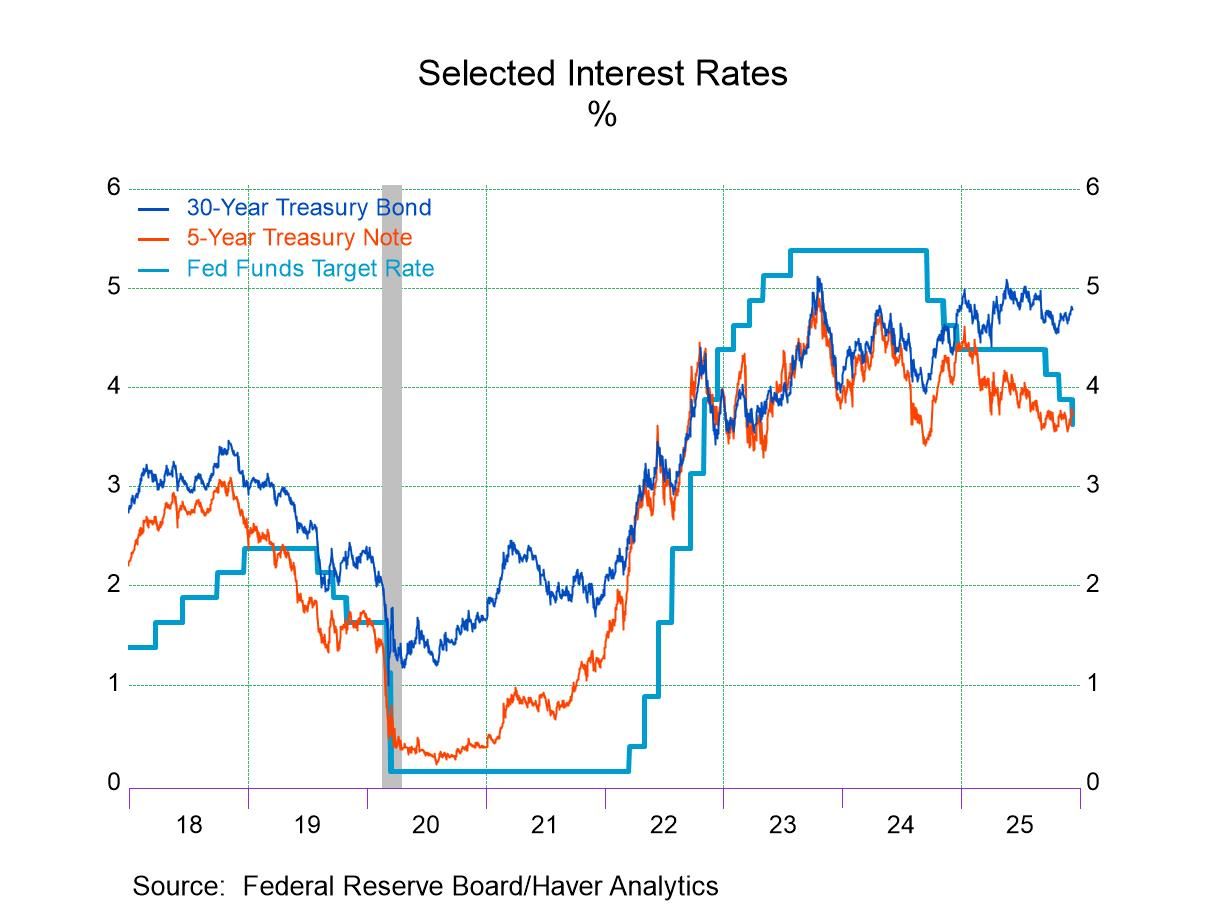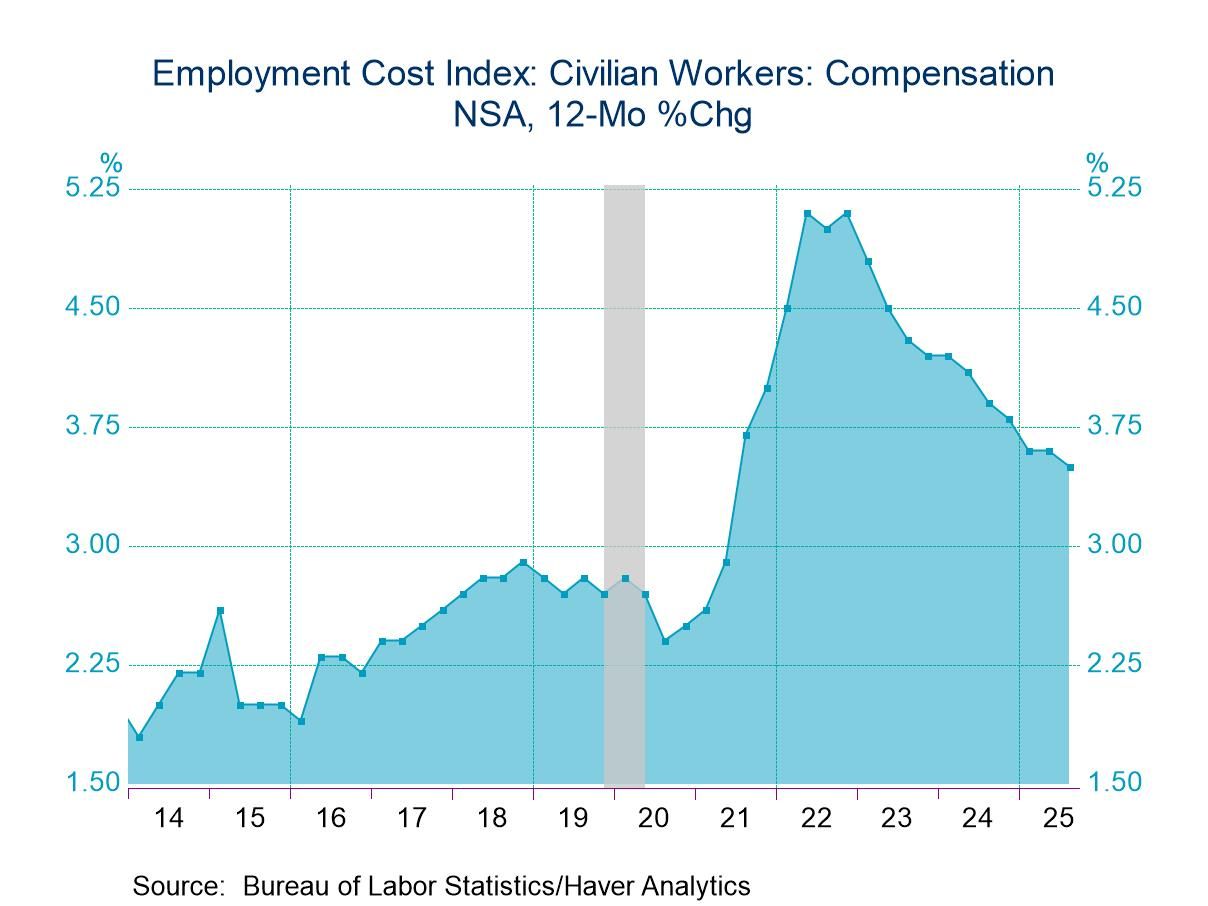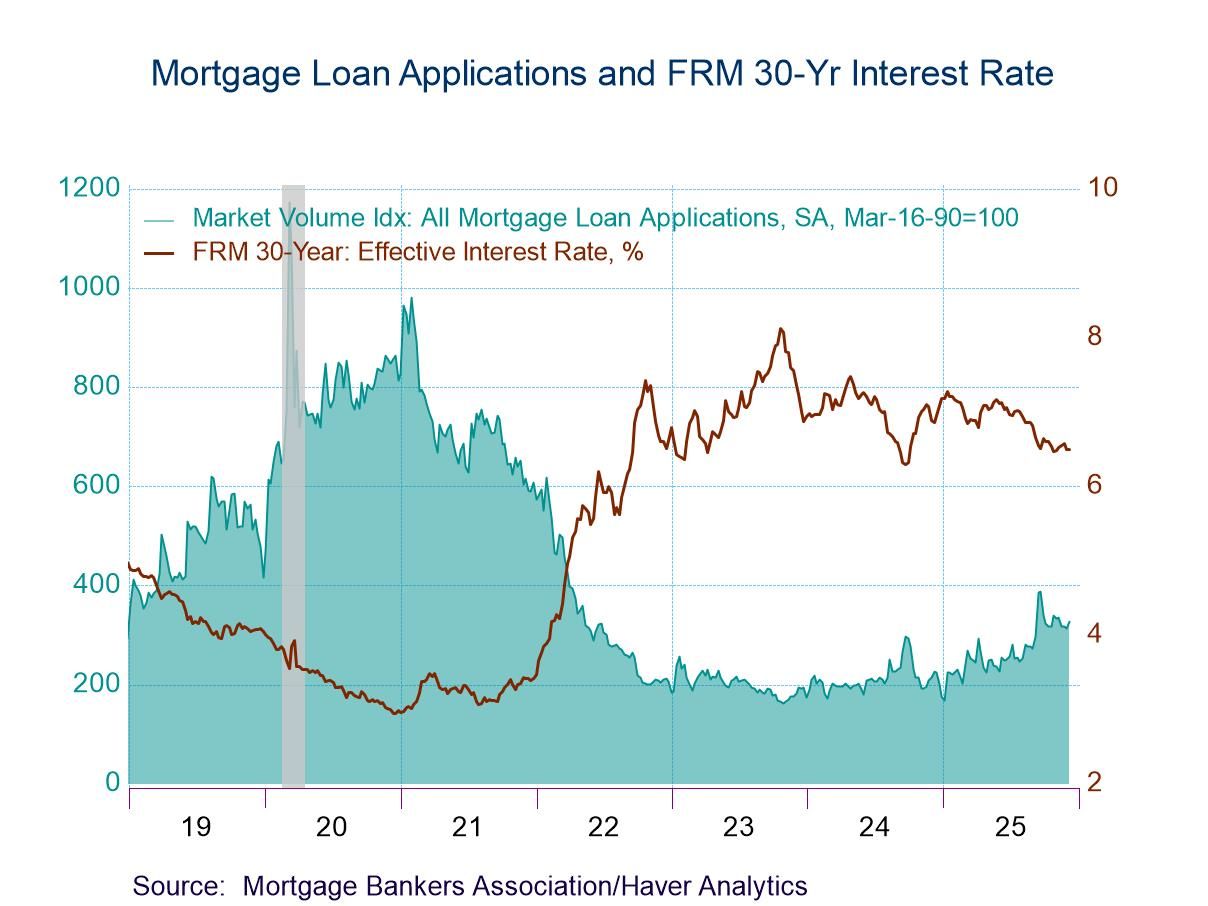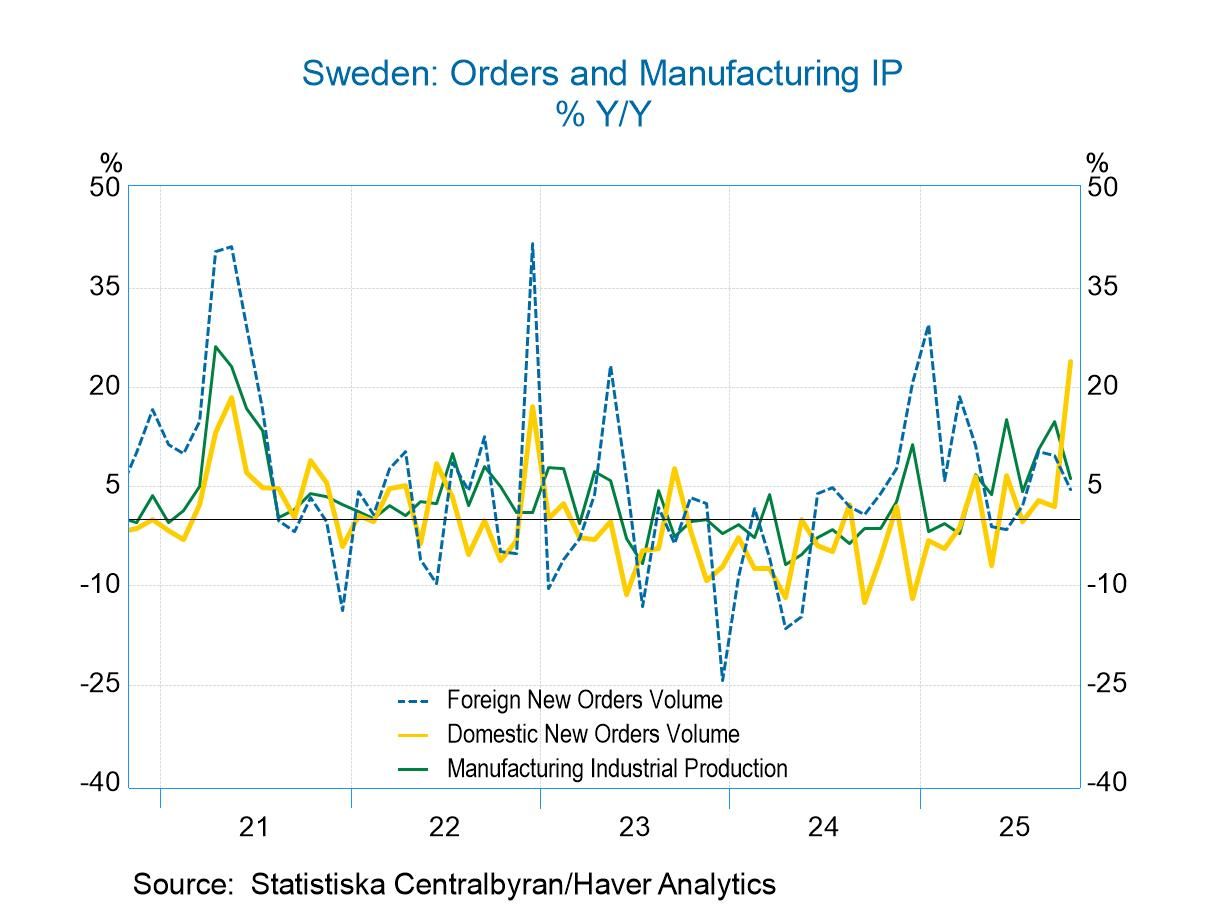 Global| Sep 29 2009
Global| Sep 29 2009Case-Shiller Home Price Index Posts Largest Monthly Increase Since 2005
by:Tom Moeller
|in:Economy in Brief
Summary
Firmer readings on home sales have given a lift to home prices. During July the S&P/Case-Shiller Home Price Composite Index of twenty metro-markets rose 1.2% from June and that was the firmest gain since late-2005. The monthly [...]
 Firmer
readings on home sales have given a lift to home prices. During July
the S&P/Case-Shiller Home Price Composite
Index of twenty metro-markets rose 1.2% from June and that was the
firmest gain since late-2005. The monthly increase eased the y/y drop
to 13.3%, less than expected. Still, prices were down by
nearly one-third since the peak in May 2006. The July gain left prices
down less y/y than the expected 14.2%. Not seasonally adjusted prices
were even stronger m/m and posted a 1.6% increase after a 1.4% June
gain.
Firmer
readings on home sales have given a lift to home prices. During July
the S&P/Case-Shiller Home Price Composite
Index of twenty metro-markets rose 1.2% from June and that was the
firmest gain since late-2005. The monthly increase eased the y/y drop
to 13.3%, less than expected. Still, prices were down by
nearly one-third since the peak in May 2006. The July gain left prices
down less y/y than the expected 14.2%. Not seasonally adjusted prices
were even stronger m/m and posted a 1.6% increase after a 1.4% June
gain.
The Case-Shiller index of 20 U.S. cities and their surrounding
areas is value-weighted. A greater index weight is assigned to more
expensive homes and the series dates back only to 2001. The
S&P/Case-Shiller home price series can be found in Haver's USECON
database and the city data highlighted below is in the REGIONAL
database.  Here is a
link to the latest press release. An overview of the
S&P/Case-Shiller home price series can be found here.·
The Case-Shiller composite index of home prices in 10 metropolitan
areas, which has a longer history and dates back to 1987, also firmed
last month by 1.3% (-12.8% y/y). This measure also was down by nearly
one-third since the 2006 peak.
Here is a
link to the latest press release. An overview of the
S&P/Case-Shiller home price series can be found here.·
The Case-Shiller composite index of home prices in 10 metropolitan
areas, which has a longer history and dates back to 1987, also firmed
last month by 1.3% (-12.8% y/y). This measure also was down by nearly
one-third since the 2006 peak.
Less Weak Regions: Home prices in some areas of the country have firmed lately though they remain down year-to-year. In Cleveland, Ohio (-1.4% y/y) and in Dallas (-1.6% y/y) prices rose for the fourth consecutive month. Prices in Denver rose for their fifth month (-3.0% y/y). Boston prices also were higher during the July (-5.0% y/y) while in Chicago home prices were quite strong m/m and rose 2.1% (-14.2% y/y). In New York prices ticked up 0.9% m/m (-10.4% y/y) while in Charlotte, North Carolina prices were roughly unchanged (-9.0% y/y.)
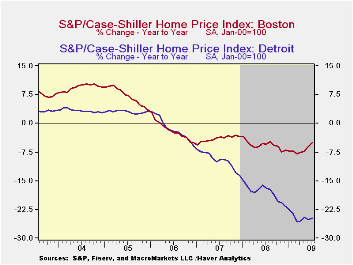 Weakest Regions: Though
home prices in Phoenix, Arizona rose 1.2% m/m they remained off 28.5%
y/y. Home prices in Las Vegas, Nevada continued their rapid rate of
decline with a 1.9% m/m drop (-31.4% y/y) and also were down by roughly
one-half from their peak. Home prices in Miami edged up (-21.2% y/y
while home prices in Los Angeles also firmed (-14.9% y/y). In Tampa,
ticked higher for the second month but remained off 18.5% y/y. In
Detroit, the monthly rate of price decline also eased considerably
(-24.7% y/y) but prices were off by early one-half from the
peak. In San Francisco prices firmed for the second straight
month and that eased the y/y decline to 17.9%.
Weakest Regions: Though
home prices in Phoenix, Arizona rose 1.2% m/m they remained off 28.5%
y/y. Home prices in Las Vegas, Nevada continued their rapid rate of
decline with a 1.9% m/m drop (-31.4% y/y) and also were down by roughly
one-half from their peak. Home prices in Miami edged up (-21.2% y/y
while home prices in Los Angeles also firmed (-14.9% y/y). In Tampa,
ticked higher for the second month but remained off 18.5% y/y. In
Detroit, the monthly rate of price decline also eased considerably
(-24.7% y/y) but prices were off by early one-half from the
peak. In San Francisco prices firmed for the second straight
month and that eased the y/y decline to 17.9%.
The Credit Crisis and Cycle-Proof Regulation from the Federal Reserve Bank of St. Louis can be found here.
| S&P/Case-Shiller Home Price Index (SA, Jan 00 = 100) | July | June | Y/Y | 2008 | 2007 | 2006 |
|---|---|---|---|---|---|---|
| 20 City Composite Index | 143.05 | 141.42 | -13.3% | -15.8% | -3.8% | 7.6% |
Tom Moeller
AuthorMore in Author Profile »Prior to joining Haver Analytics in 2000, Mr. Moeller worked as the Economist at Chancellor Capital Management from 1985 to 1999. There, he developed comprehensive economic forecasts and interpreted economic data for equity and fixed income portfolio managers. Also at Chancellor, Mr. Moeller worked as an equity analyst and was responsible for researching and rating companies in the economically sensitive automobile and housing industries for investment in Chancellor’s equity portfolio. Prior to joining Chancellor, Mr. Moeller was an Economist at Citibank from 1979 to 1984. He also analyzed pricing behavior in the metals industry for the Council on Wage and Price Stability in Washington, D.C. In 1999, Mr. Moeller received the award for most accurate forecast from the Forecasters' Club of New York. From 1990 to 1992 he was President of the New York Association for Business Economists. Mr. Moeller earned an M.B.A. in Finance from Fordham University, where he graduated in 1987. He holds a Bachelor of Arts in Economics from George Washington University.



